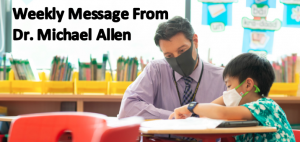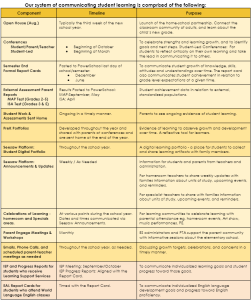
Next week, Grades 2-5 MAP results will be available to parents via PowerSchool, and on Thursday, June 1st I’ll host a parent session to dive deeper into the assessment and address any questions. MAP and standardized test results are an essential part of our Communicating Student Learning beliefs found in our ES Parent/Student Handbook (page 61) and copied below for easy reference.
Note that MAP is one of multiple assessment pieces that our teachers use to monitor student growth and determine next steps in learning. Children do not all learn in the same way, so any standardized assessment needs to be viewed only in conjunction with a range of other learning data. We get the most accurate picture of a student’s progress by using a variety of learning evidence including everyday ongoing assessments, learning conversations with students, and ongoing formative assessment (assessment that helps us design more appropriate subsequent learning experiences).
MAP measures your child’s achievement level compared to other students who have taken this test, and measures academic growth over time in the areas of mathematics and reading. The test does not cover all academic skills, nor does it cover such areas as physical, artistic, or interpersonal skills. Parents will gain a more complete picture of student performance by looking at this test along side a variety of classroom work samples and other assessments over a period of time.
The people who create and score these tests do not know each child the way teachers do and certainly not the way you do. They do not know that your child speaks two or more languages fluently. They do not know that your child can play a musical instrument or that he/she can dance or paint. They do not know that your child writes poetry or songs, plays or participates in sports, wonders about the future, or that sometimes he/she takes care of a little brother or sister after school. They do not know that your child has traveled to fascinating places around the world or that he/she knows how to tell a great story or that he/she really loves spending time with special family members and friends. They do not know that your child acts with integrity and can be trustworthy, compassionate or thoughtful, and that he/she tries, every day, to his/her very best…the MAP scores will tell you something, but do keep in mind that they will not tell you everything.
Your partner in education,
Michael Allen
MichaelA@isb.ac.th
Communicating Student Learning – From pg.61 ES Parent/Student Handbook
At ISB we believe that Communicating Student Learning empowers each student to understand, reflect on, and take ownership of their learning process as well as fosters the partnership between parents, students and teachers.
We define Communicating Student Learning as:
- Visibly documented evidence of learning growth over time for each child – knowledge, skills, attitudes and understandings.
- Guided by clearly communicated goals, expectations, feedback and reflection.
- Communicates student achievement in relation to grade level expectations at a given time.
- Transparency of ISB program and learning outcomes for stakeholders.
Our system of communicating student learning provides a framework of communication and collaboration that fosters passionate, reflective thinking and behaviors so that all students reach their full learning potential.

